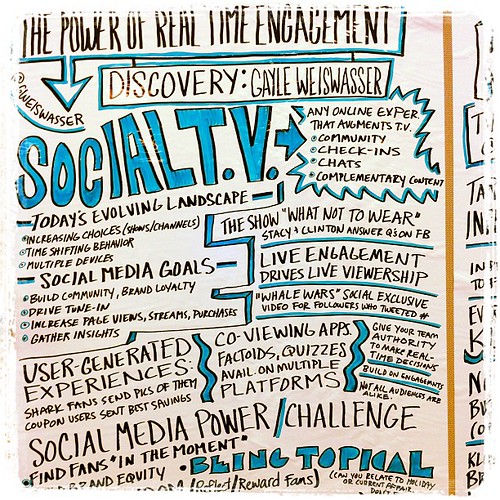Execution trumps strategy, according to Rachel Tipograph, social media director for the Gap. She was a very wise speaker on the “how” of actually getting things done in large organizations. Creating meaningful experiences online is more important than endless rounds of strategy and planning. As I listened to her speak at What’s Next DC, I watched heads bobbing in agreement around the room.
Execution > Strategy. Which is how I feel about conferences devoted to social media. How can you develop the perfect social media strategy in an ever-changing environment, especially when success is determined by the audience? It’s better to dive in, create something, and see what works.
I was at What’s Next DC thanks to my own bit of execution – I made a pithy comment on the importance of storytelling on GovLoop and won a free ticket to this conference on digital marketing.
What’s Next DC was relentlessly focused on execution, on new media marketing efforts that worked as told by the people who created them. There were no belabored lectures on the media landscape illustrated by grainy slides filled with biz speak jargon. Instead, real practitioners in the field told their stories, warts and all.

One of my favorite speakers was Jessica Gioglio from Dunkin Donuts. She made the point that Dunkin Donuts was a brand owned by the fans. People feel passionate about the donut-maker and her job was to provide them the tools to express that passion. They have a huge presence on Facebook, where they promote a “fan of the week” and run lots of Dunkin “DD” puns.
And when Dunkin screws up, she’s going to hear about it, even if it’s a local franchise having a typo in their signage. You have to respond quickly and personally to every concern.
Sabrina Caluori from HBO is not the kind of speaker you’d typically find at a conference in DC. She shared the successes and failures of HBO’s social media efforts. They originally tried a tweet-chat with one of the stars of True Blood. As hundreds of questions poured in, it was quickly clear that this wasn’t going to work. That led to the development of HBO Connect, a “digital water cooler” for fans to discuss their favorite shows and communicate with talent.
I have a passionate, vested interest in the Washington Post. I’ve read the paper daily for decades. Over the past couple years, I’ve watched as the Post web site became virtually unusable, due to a clunky content management system and the integration of every annoying web gadget out there.
Sadly, social media is just part of the clutter. Katharine Zaleski from the Washington Post discussed some of these “advancements”. Coming from the Huffington Post, she brought a relentless focus on metrics and daily measurement of news performance. And she rolled out a couple of dubious products. Mention Machine is super annoying. It’s a little bar that appears at the bottom of the browser, impinging upon the story that you’re reading, and showing the number of Twitter mentions various candidates have received. Doesn’t the Washington Post understand that we just want to read an article? Isn’t that what newspapers are for?
Another deleterious gee-whiz gimmick is the Washington Post Social Reader. I don’t want to install another annoying Facebook app just to read stories that my friends find interesting. Why do you have to reinvent the URL?
This is execution gone wrong, when you place barriers in front of your readers.

One final (and good) example of execution – the brilliant whiteboards by Carolyn Sewell!
These beautiful “doodles” summed up panel discussions in a creative and artistic manner. They’re a great way to remind people of what was discussed. And I’m sure her artistic talent didn’t originate in some strategic planning session.
What’s Next DC is not just another social media conference. With its focus on results, attendees left with lots of good ideas to execute – and not just strategize about.
May I use your photo of the whiteboard in my blog write up of the conference?
Sure!